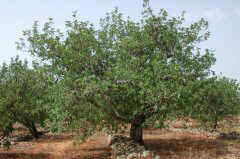Contents
Characteristics of fluoride
What is fluorine and fluoride?
Fluorine is a trace element or microelement. . It is called trace element because the body needs this component in very low doses.
It is estimated that fluorine , in the reduced form of fluoride, only means 1.4mg. of weight in an adult. Fluoride is considered very important for the formation and hardness of bones and teeth
Fluorine is the pure form of the chemical element. Fluoride is the negative ion of the element fluorine
Properties of fluoride

- Healthy teeth: In countries where fluoride is added to drinking water, the incidence of dental caries has been reduced by 50% among children. This component is added in very small doses, about 1 parts per million (ppm.).
- Strong bones: Fluorine, along with boron, is one of the trace elements that reinforce the health of bones. People who have adequate calcium and vitamin D intake, along with fluoride, significantly reduce the risk of fractures.
Attention! When the fluoride is taken in too high doses, this mineral produces the opposite effect, and the bones become porous and soft.
Symptoms of deficit or lack of fluoride
Deficits of this mineral do not usually take place since this mineral is present in all dental hygiene pastes. Fluoride deficits are mainly discovered when there is an excessive proliferation of tooth decay.
Problems with fluoride excess

The main symptom of an excess of fluoride are:
- Dental fluorosis, which is characterized by mottled teeth.
- Skeletal fluorosis: causing joint pain and alteration in bone structure.
Is fluoride a safe mineral?
Fluoride is a controversial mineral: Despite its benefits in low doses, it has been seen that in some cases it can increase some disorders such as hyperactivity, contamination by heavy metals such as lead, osteoporosis by bone demineralization, and even cancer.
It has also been seen that in high doses it is detrimental to bones and can cause premature tooth fall or skeletal fluorosis. The last problem is very common in India and China, where people usually drink ground water with a very high content of fluoride (about 8 ppm)
Taken too often, it destroys the natural defenses of the mouth against microbes and may increase the risk of caries.
Fluoride sources. Where can you find it?
- Drinking water that has been enriched with fluoride. Tap water in some countries , such as Australia, United Kingdom or United States, is enriched with this component, in a proportion of 0.7 parts per million (ppm) Bottled water does not usually contain it .
- Ground water: In concentrations of 0.01 to 0.3 ppm. In some places the too much high content of fluoride in water can be dangerous
- Marine foods: edible seaweed, fish and shellfish. Especially the small fish that is wholly consumed(with bones)
- Tea (green tea, matcha tea, kuchica tea, etc)
Fluoride supplements
Fluoride supplements are sold by prescription in the form of drops.
![]() More information on fluoride
More information on fluoride








